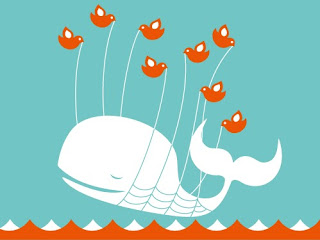Cellular devices have evolved at an incredible speed in the past fifteen years. We have come from a world in which owning a cellular phone was a distinctive social achievement proof to a place where cellular phones are ubiquitous and as common as key chains.
The mass availability of these devices has changed the way we see and use them.
At the dawn of the cell phone era, the lucky owners of such coveted devices would justify their purchase by the need to be reachable at all times for they would be or see themselves as very important people. In this regard, cell phones would nourish their owner's narcissistic needs and stand for some sort of phallic prosthesis. Laying a cell phone on a restaurant table would act as a beacon of power and wealth.
As cell phones became more affordable, their mass adoption lead to the decline of their phallic prosthesis function. They, however, contributed to the creation of a new sense: the sense of connectivity that every new user would experience after carrying such a device in their pocket on a day-to-day basis. At that time, cellular devices became counter phobic objects, relieving their owner's fear of not being able to call for help in case of an emergency and enabling them to feel freer in their social interactions at the same time.
The Web 2.0 revolution introduced a much greater but less apparent paradigm shift. Social media are evolving at an ever increasing pace and they are consistently creating new connections, mimicking in that respect the constant rearrangement of neuronal connections present in our brains. When the internet became widespread, many visionaries described the web as a neuronal network and fantasized about the possible advent of its own potential consciousness.
Are we ever to witness the creation of such an event, whether you call it an anomaly or as Bergson would put it “the essential function of the universe, which is a machine for the making of gods” in the sense that we could consider ourselves the creators of this “artificial”’ consciousness? If so, it is more likely to be thanks to the increasing speed at which social media users create new links between one another as these connections share so many common characteristics with our own brain synapses.
Let’s have a look at “Twitter”. Its success might be related to its appeal on many different levels: narcissistic, voyeuristic, introspective, fashionistic etc… It is more importantly the vessel to a wealth of social interactions whether they be passive or active. When you pull up Twitter’s home page, you experience a feeling that Freud once called “Das Unheimliche” (a disturbing strangeness) as you are beholding the world, yet it is not the same world as the one you have been used to see before your eyes.
What is most striking when attempting to extract the quintessential aspect of Twitter is the way it allows users to connect to one another. You can indeed choose to “follow” people which will enable you to read whatever they are posting and people can in return choose to follow you back. You have in this concept the exact neuronal paradigm representation.
Basic neurobiology describes what happens in a synapse between two neurons: the terminal (axonic) end of a neuron transmits a signal through a gap (synapse) to the postsynaptic dendritic end of a second neuron. This is very similar to the way one can follow another Twitter user and become the recipient of their messages. The similarity doesn’t stop here. As we are indeed capable of replying to one user’s Twitter updates, this is absolutely similar to what neurobiologists call retrograde neurotransmission where the dendritic end of a neuron transmits a signal back to the axonic end of the original neuron, thus replying to its message.
One less known neurotransmission mechanism is called “volume neurotransmission” where a neuron can release a specific neurotransmitter outside of a synapse. This neurochemical will be able reach the dendritic end of many neighboring neurons, thus allowing for message transduction on a larger scale. This last example is very close to the way one Twitter user can “spread” their updates to a number of followers without necessarily following them back in return.
Humans are seen as social animals as most of us share the inherent will to create new connections to one another. Those unable to do so usually suffer great anxieties and are seen as sick by the majority. Now that we have come to a time when so many of us carry social interaction devices 24/7, we keep creating new connections at the literal speed of light. It is, therefore, inevitable that these connections change the very fabric of our world. The main question that still needs to be addressed is: will this change lead to the advent of an artificial consciousness that will co-exist with us Humans or will it change our own individual consciousness and perception of the world on an idiosyncratic scale?

